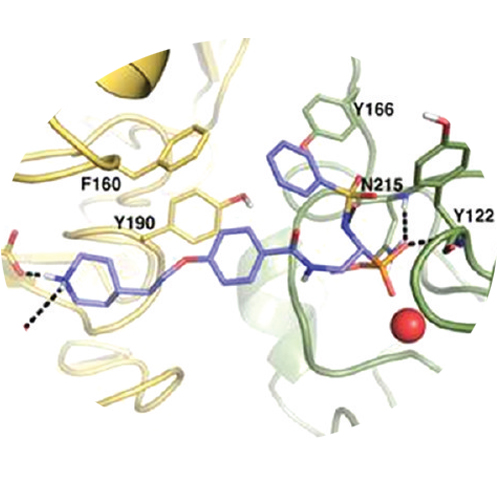Tailoring of Integrin Ligands: Probing the Charge Capability of the Metal Ion-Dependent Adhesion Site
19-Dec-2011
J. Med. Chem., 2011, DOI: 10.1021/jm2013826, 55 (2), pp 871–882 published on 19.12.2011
Intervention in integrin-mediated cell adhesion and integrin signaling pathways is an ongoing area of research in medicinal chemistry and drug development. One key element in integrin–ligand interaction is the coordination of the bivalent cation at the metal ion-dependent adhesion site (MIDAS) by a carboxylic acid function, a consistent feature of all integrin ligands. With the exception of the recently discovered hydroxamic acids, all bioisosteric attempts to replace the carboxylic acid of integrin ligands failed. We report that phosphinates as well as monomethyl phosphonates represent excellent isosters, when introduced into integrin antagonists for the platelet integrin αIIbβ3. The novel inhibitors exhibit in vitro and ex vivo activities in the low nanomolar range. Steric and charge requirements of the MIDAS region were unraveled, thus paving the way for an in silico prediction of ligand activity and in turn the rational design of the next generation of integrin antagonists.











